Clinical Case
It is widely accepted that pressure ulcer prevention is better than cure. Early intervention with proven, clinically effective equipment is absolutely vital as it can take only minutes for an at risk patient to develop a pressure ulcer (EPUAP, 2009). Pressure ulcers occur in all age groups and across all care settings (Fletcher J, 2012).
Intelligent Pressure Care Management addresses these issues through rapid intervention with a higher grade support surface at the point of patient admission. Delivered through the Mercury Advance trolley mattress and Mercury Advance bed mattress continuity of care at any point in the patient pathway is ensured with A&E, X-ray, Endoscopy and Operating Room surfaces available. Focus on these previously neglected ‘hot spots’ as well as the ward setting, supports the earliest intervention, which in turn
reduces incidence in receiving units (Newton H, 2010 & Guy H, 2012).
Rapid stepping up and down of mattress performance ensures the most responsive, effective treatment of pressure ulcers. The simple addition of a pump to the base unit provides the ability to step up any bed in any location within seconds without additional moving of the patient or downtime awaiting a mattress replacement. Minimised moving and handling of the patient reduces risk of both patient trauma and nurse injury. This feature allows use of the product in all care settings.
Mercury Advance is clinically proven in use for high risk patients and has been effectively used in the treatment of Stage 4 pressure ulcers. The benefits of increased comfort for the patient include higher patient compliance resulting in improved healing rates as well as reducing incidence.
Intelligent Solution Clinical Case StudyFletcher J, (2012) Device related pressure ulcers made easy. Wounds UK 8(2).
Guy H, (2012) Recognising Pressure Ulcer Risk Factors. Wounds Essentials Vol 1 p49 – 52
Mason S, (2012) Dyna-Form Mercury Advance: A Revolutionary Step-Up/Step-Down Approach.*
Newton H, (2010) Reducing pressure ulcer incidence: CQUIN Payment Framework in practice.
Wounds UK Vol 6. No 3 p38 – 46
NPUAP/EPUAP (2009) Pressure Ulcer prevention & treatment guidelines. EPUAP Oxford.
Rafter L Prof. (2011) Evaluation of Clinical Outcomes: Pressure Ulcer Prevention Mattresses.
British Journal of Nursing (Tissue viability supplement), Vol. 20.
Economic Case
Pressure Ulceration is regarded as the most expensive chronic wound in the healthcare system (Posnett & Franks 2008).
Intelligent Pressure Care Management delivers major cost reductions by preventing the escalation of pressure damage at the point of patient admission.
The single choice of support surface for 98% of care needs and rapid ability to step-up treatment reduces the number of bed days where expensive rental or purchased products are presently required, also reducing risk of secondary infection and associated costs.
The Mercury Advance support surface can be cleaned in the unit in the same way as a standard foam mattress, greatly reducing the decontamination costs of traditional dynamic mattresses.
In addition reduction in logistics, storage, moving and handling and nursing time costs are delivered through the simple and effective step-up/step-down ability of the system.
Product cost savings offer the ability to extend the coverage of high-risk support surfaces across any care setting, further reinforcing prevention as the focus of Intelligent Pressure Care Management and its innovative and cost effective approach in the treatment of pressure ulcers; generating a like for like saving of 40% (Ratcliff, 2012).
Posnett & Franks, (2008) The burden of chronic wounds in the UK. Nursing Times, 104(3):44-45.
Ratcliff C, (2012) Evaluation of the Mercury Advance Mattress: Clinical & Cost effectiveness of Use.*
